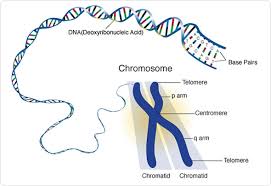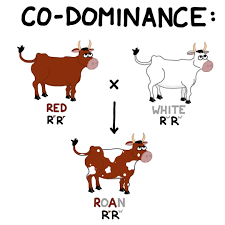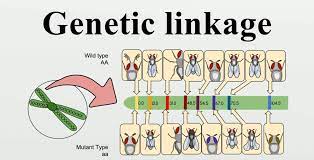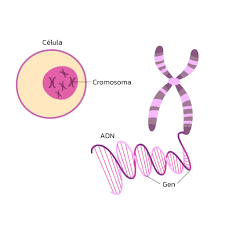As advances in genetics have confirmed and illuminated the mechanisms underlying Mendel’s observations, the need to adapt and modify his principles has also been discovered. Gene interactions and exceptions to Mendel’s laws of inheritance are described in this article.
Complete Dominance in Genetic Expression

This is a type of gene action in which one allele at a locus completely masks the effect of another allele at the same locus. All the allelic pairs that Mendel studied showed complete dominance relationships.
One allele at a locus is dominant over the other, so the phenotype of the homozygous dominant and heterozygous genotypes are the same. The recessive genotype is phenotypically expressed only when the organism is homozygous.
Incomplete Dominance and Its Effects
Incomplete (partial) dominance occurs when the dominant allele is not completely dominant over the recessive allele, and the heterozygote’s phenotype is closer to the dominant phenotype than to the recessive phenotype but is not identical to the dominant phenotype.
In other words, incomplete dominance is a form of intermediate inheritance in which one allele for a specific trait is not completely dominant over the other allele. This results in a combined phenotype.
Example: In cross-pollination experiments between red and white snapdragon plants, the resulting offspring are pink. The dominant allele that produces the red color is not completely expressed over the recessive allele that produces the white color.
Read Also: Gumboro Disease: Symptoms and Prevention
Co-Dominance in Genetic Traits

In co-dominance, both alleles of a pair are fully expressed in a heterozygous individual. The F1 heterozygote exhibits the phenotypes of both homozygous parents. There is no dominant or recessive allele.
Both alleles contribute equally to the production of phenotypes, so the heterozygous genotype produces a phenotype that displays characteristics from both homozygous genotypes. The ABO blood system provides a good example of co-dominance.
Overdominance in Heterozygous Offspring
This is a type of gene action in which the performance of heterozygous animals is more extreme than that of both homozygous parents.
Epistasis and Gene Interaction
Epistasis is a form of gene interaction in which an allele at one locus interferes with or masks the effect of another allele at a different locus. A gene that masks another gene’s expression is said to be epistatic, and the gene whose expression is masked by a non-allelic gene is said to be hypostatic.
Pleiotropy and Its Effects on Multiple Traits
Pleiotropy occurs when an allele at a single locus influences more than one characteristic. A gene that affects several characteristics is said to have a pleiotropic effect.
Read Also: Vaccination Program for Poultry Chickens
Linkage and Its Role in Inheritance

An exception to Mendel’s law of independent assortment of genes, linkage occurs when particular genes are at different loci but are carried on the same chromosome.
Because chromosomes tend to be transmitted in their entirety, different genes are transmitted together, meaning the segregation rule may not hold. Genes situated close together on a particular chromosome tend to be linked more than those situated at opposite ends of the chromosome.
Sex-Limited Genes in Agricultural Traits
Sex-limited genes are autosomal genes (body cell genes) that affect traits appearing only in one sex but not in the other. Traits of this kind are called sex-limited traits.
Examples include milk production in dairy cattle, breast formation in humans, and the ability to produce eggs in chickens. The genes involved in these traits operate in females but not in males.
Sex-Influenced Traits and Their Patterns
These are autosomal genes, but the traits controlled by these genes appear in both sexes, with a higher frequency in one sex than in the other. An example is pattern baldness in humans.
Sex-Linked Genes and Their Inheritance Patterns
Genes whose inheritance pattern differs between males and females are said to be sex-linked. Sex-linked genes are located on the sex chromosomes and follow different patterns of inheritance.
Do you have any questions, suggestions, or contributions? If so, please feel free to use the comment box below to share your thoughts. We also encourage you to kindly share this information with others who might benefit from it. Since we can’t reach everyone at once, we truly appreciate your help in spreading the word. Thank you so much for your support and for sharing!

